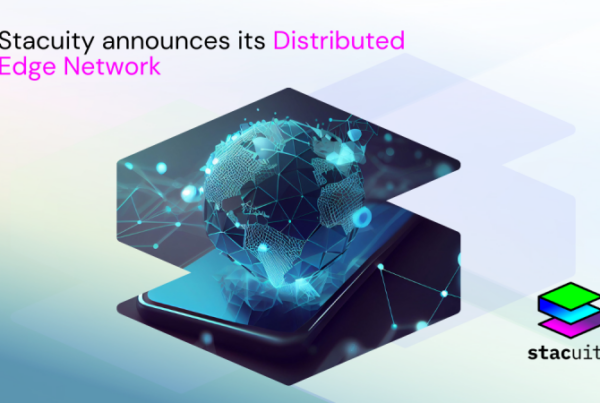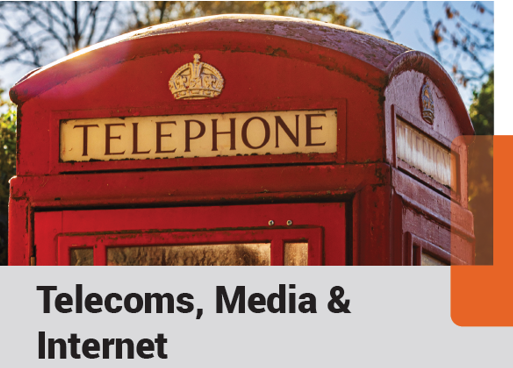It has been another eventful year in mobile, with innovations in smartphone and associated technologies continuing apace, from the explosion in AI chatbots and the rapid proliferation of smart connected home devices, to the continued digital transformation of the fintech sector.
MEF Members did a pretty good job of spotting the trends that would shape the mobile landscape in 2017, and we continue to see the impact and development of many of these technologies.
But what innovations will 2018 bring? Once again, we asked MEF members to give us their thoughts on the tech trends for the year ahead…
Claudia Dreier-Poepperl, CEO and Founder, Calldorado
2017 played out its last months with a dominating hot topic in the arena of app growth – Google’s Universal App Campaign format (UAC). Google’s blanket rollout of UAC during mid-October 2017, means app publishers no longer have the same level of control of their advertising campaigns, and instead rely on machine learning to get the best results.
One of the challenges is that this machine learning takes time, and costs money. In our experience Cost Per Install (CPI) for new users has risen significantly in the initial advertising period, of course this improves over time.
For smaller publishers with limited funds available, this learning phase could devour their entire budget for user acquisition.
I think this will result in a new market in mobile where publishers seek funding specifically to grow their apps to a point of positive RIO. This will open up the mobile market to investors wanting to enter the app economy by funding scale-ups instead of start-ups.
Naturally this also means that publishers will need to monetise their apps more effectively to entice investors to fund the growth. The success of app publishers in 2018 will depend on the ability secure growth and monetise in such an effective way they their apps become lucrative investment opportunities.
Ben Bannister, Director of Product Marketing, IoT and Mobility Services, Tata Communications
An increase in mobile usage by consumers for a multitude of tasks, will make lack of a mobile customer engagement strategy an increasing risk for business to consumer (B2C) organisations (and I don’t mean just commercial enterprises), during 2018.
Hopefully we will witness a change towards a more consumer centric perspective, with regards to mobile enabled services. While mobile technology opens new possibilities for customer interaction, it also runs the risk of irritating and alienating consumers.
The arrival of GDPR in Europe (during May 2018) impacts all organisations that operate in and out of Europe or hold data about European citizens.
This will influence not just the way organisations manage data in future, but should also influence a change in the way that mobile is used as an interaction and information management medium. There is likely to be increasing innovation in the way that mobile is used for marketing, gifting, interaction with enterprise apps, browsing, customer service and mobile payment technology.
New Fintech services and mobile customer interaction services will continue to present opportunities for commercial innovation. Success will be based upon integrating combinations of channels and services, to help with consumer interaction and create more meaningful relationships with customers
Rimma Perelmuter, CEO, MEF
2018 will be the year when building trust in technology and consumer data regulation take centre stage.
The recent backlash surrounding Apple’s slowing down of some older iPhones demonstrates that savvy consumers demand trust from brands and are prepared to take action when it is eroded.
Apple cleverly not only apologised for its mishap but took accountability to win back trust. By offering a plausible explanation and way forward including a promise of ‘more visibility’ into the health of the user’s iPhone’s battery, Apple highlighted the importance of communicating transparently and taking decisive action. Time will tell if their efforts prove sufficiently compelling to satisfy consumers and counter the numerous class action lawsuits filed.
Indeed, rebuilding trust is harder than earning it in the first place and those companies at the forefront of digital transformation who recognise that creating trust around users’ privacy, identity and security stand to gain competitive advantage in 2018
Concurrently, consumers are growing increasingly aware around the value of their data; an asset that needs to be treated with respect, or even as something that the use of confers a reciprocal benefit to them.
Regulators are trying to protect and empower consumers with 2018 seeing a raft of new laws come into effect. The introduction of regulation such Open Banking and GDPR in Europe heralds the right for consumers to manage and benefit from their own digital data. Blockchain will seek to transform how we exchange value and create trust. In this complex landscape, 2018 will see the rise of innovative businesses committed to building a trusted profitable data-driven ecosystem which benefit from transparency and clear value exchanges.
Jon Prideaux, CEO, Boku
- Old business models based on hard-sell mobile-marketing, flimsy content and subscriptions acquired with dubious levels of consumer consent will continue their decline – hopefully the industry will be able to put them behind us in 2018;
- App store volumes will continue to increase both in terms of coverage and usage. Google and Apple have led a transformation in the industry and their influence will continue to widen, pulling the industry forward;
- One effect of the app stores has been to push carriers to moderate prices and upgrade their systems. Compared with the past, carrier billing commercials are now less uncompetitive and systems are at less of a functional disadvantage when compared with other payment mechanisms. But it never stops: investment will now have to switch into systems to manage bad debt — allowing further reductions in revenue shares — and platform quality — latency, availability and capacity on carriers’ systems still leave considerable room for improvement.
- It’s a cliché but data is the new oil. More use will be made by carriers of their data to help optimize commerce. New Business Models will emerge as this data becomes applied and monetised
- Behind it all, two big pieces of regulation: GDPR and PSD2. Both Payments and Data Protection rules are being overhauled and it’s not yet clear where all the pieces will fall, we can be sure that both regulations will have an enduring impact.
Charlotte Newby, Head of Corporate Communications, Dimoco
A truly grown up version of Direct Carrier Billing is set to emerge in 2018.
The Payment Services Directive (PSD2) is finally upon us in 2018 and will truly be a game changer for the DCB industry, separating the wheat from the chaff.
Many providers will be filtered, due to not being fit for the new regulative environment. Only regulated suppliers will be able to operate, this wasn’t the case with the initial PSD. The new governance will bring a large shift to our industry, which previously has seen a lack in regulations and control, aiming to make payments safer, increase consumers’ protection and advance innovation in an increasingly integrated EU single market.
Moreover, the payment method with continue to outgrow online business literally “born with mobile”, such as online entertainment, and become more and more popular with industries such as ePublishing, streaming and vending as a preferred and easy payment option for micropayments.
Silvio Kutic, Founder & CEO, Infobip
Predictions for 2017 were focused on buzzwords such as RCS, chatbots, IoT AI and other new technologies making their way into the mainstream. It’s safe to say that in 2017, they haven’t achieved the potential that was optimistically predicted, but 2018 will be the year of continued development and new rollouts of these technologies and services.
In 2018 the focus will be on formulating and fine-tuning the use cases and the ways to achieve the best user experience and the best ROI for the enterprise, developer or mobile operator deploying the service. RCS in particular will be interesting to watch, with the first commercial A2P RCS projects slated for launch in 2018.
Numerous security breaches put the spotlight on adopting and diversifying technologies and methods for user authentication. The key will be providing seamless and efficient authentication methods that combine security and user experience. Mobile user data are a potential goldmine, and this is where communications platforms and telcos will work together on developing a case that strikes a balance between security and user experience.
These trends will be a major part of the unstoppable advance towards contextual communication, with communication platforms at the forefront of innovation in omnichannel engagement solutions.
Gary Greenbaum, Co-Founder and CEO, Syntonic
In last year’s MEF blog, “What’s in Store for 2017,” Syntonic predicted that sponsored data would transition from early adoption to mainstream deployment in emerging economies. Sponsored data and zero-rated content allow consumers to experience mobile apps without impacting their data plans, and they open up the funnel for app developers and brands to acquire, engage, and monetize consumers by reducing the unnecessary friction of mobile data limits. Sponsored data and zero-rating provide new business models for carriers.
One year later, it’s common to find operators who are exploring or who have deployed zero-rated content or sponsored data. The strong interest has been precipitated by flattening or declining carrier ARPU (average revenue per user).
In 2018 new content-centric models will flourish alongside sponsored data and zero-rating in Latin America, Africa and Southeast Asia. Unlimited data plans have swept the U.S. by storm but they lack flexibility, personalization, and are prohibitively expensive in emerging economies.
In 2018 more economical and personalized models such as app-level unlimited data offers, ad supported content, time or usage-based micro plans and content subscriptions will lower the access barrier and enable new content services for over 2 billion people.
Jesús Cisneros, COO and Cofounder, Quiubas Mobile
RCS and Whatsapp Business bring a totally new perspective to the industry.
Some messaging companies see this as a threat that will affect A2P messaging; this will most likely be true for smaller players in the industry; for better positioned players this will become an opportunity for new revenue as new services and developments will be deployed to integrate to the growing A2P messaging area; in other words, multichannel messaging.
In Mexico and Latam, phone carriers are finally noticing the value in A2P messaging, the harm that sim farms and gray routes cause not only to the industry and end users, but to their revenue. Blocking these routes and choosing reputable A2P companies to work with, will help consolidate the industry; companies not complying with A2P ethics and delivery quality will struggle not only to growth but keep doing business.
IoT will have a good year, but industry could be potentially affected by regulations on using devices designed for anytime / anywhere connectivity.
Teniola Stuffman, Executive Director, Business Development & Marketing, VAS2Nets Technologies
The global mobile payment market has seen exceptional growth in 2017 due to lower barriers on customer acquisition via mobile, affordable infrastructure, artificial intelligence, social technologies, new currencies and changing consumer behaviour.
2018 will exceed any forecast owing to new innovations in blockchain technologies. Mass transformation of data in telecoms and financial sectors, proper record of data with ownership rights to anything of value, Internet of things (IOT) will give room for remarkable growth in the VAS industry.
A widespread technology convergence with more focus on data management, solutions on security, property tech, data management in logistics, personal managements (health), farming techniques, ease budget planning and many more all in one.
2018 will disrupt existing data management protocol for a structured consumer data protection system.
Oisin Lunny, Chief Evangelist, OpenMarket
We have reached an interesting stage in the evolution of Phono Sapiens. Consumers want brands to interact with them on their mobile devices, but are tired of apps, indifferent to email, hostile to voice calls, and blocking mobile ads. Meanwhile, mobile messaging is now the most trusted B2C communications channel in the world, according to leading commentator Scott Galloway.
While SMS, after 25 years, remains unsurpassed in terms of ubiquity, reliability and sheer global reach, I suspect I am not alone in thinking that 2018 belongs to Rich Communication Services (RCS). This “upgraded SMS” solution offers an app-like experience directly in a smartphone’s SMS inbox, with no extra install needed. This means that brands can offer a stunning user experience with only a mobile phone number. As we transition to a post-app economy we are reaching a golden age of mobile messaging, so brands need to prepare by establishing relationships with their customers right now, using SMS.
I had the honour of demoing OpenMarket’s RCS solution for Virgin Trains at MWC in 2017, and the reaction was uniformly: “Can we have this now?” I’m happy to say that 2018 is the turning point for this incredible technology.
Declan Pettit, Director, Monitoring Compliance Partners
Fraud technologies are being democratised worldwide at a frightening pace, making it possible for anyone with a laptop, loose morals and a passing technical knowledge to defraud mobile customers.
We will see application installation packages (APKs) under attack from increasingly sophisticated Adware viruses, immune to factory resets. These viruses can install third party apps, activate subscriptions and make one-off purchases on a user’s device.
Bots running automated scripts are probably the most useful tools in the fraudsters’ arsenal with bot generated traffic surpassing that of humans for the first time ever in 2017. Some bots are ‘naughty’ and some are ‘nice’. Search engine spider bots are ‘nice,’ Instant Messaging bots are annoying but ‘nice’; and the bots built by criminals to use as tools against online merchants are definitely ‘naughty’.
As more people use smartphone apps to make purchases online, attacks through carrier billing will become commonplace in 2018 within App store environments – and in particular on devices using Android’s OS. Examples range from ‘fake payment requests’ into payment gateways to ‘sleeper APK files’ that have been downloaded and only come to life when they have been installed.
Bots eventually start displaying suspicious behavioural patterns that can uncover spoofed IPs or emulated devices. Employing scanning tools will help identify these anomalies – as well as on going human analysis that augments this scanning.
Nikunj Sanghvi - Head of US Sales and Business Development, Robosoft Technologies
In 2017 we saw the app economy booming and industries across the globe investing in the mobile platform. But with this growth, the consumer expectations from apps have also increased and enterprises are using new-age technologies to keep up with the changing consumer expectations.
In 2018, we will see the emergence of smarter apps equipped with technologies like IoT, AR/VR, etc. One of the technologies that will get a significant boost next year is Augmented Reality (AR).
AR as a technology though is not new; its usage has been more or less limited to location-based searches. However, with newer mobile devices, faster processors and dedicated hardware for 3D depth sensing, the experiences in AR is only going to get better.
Further, with technology giants like Apple, Google, Facebook etc. making it easier for developers to build AR based apps, we can expect a rise in the number of AR apps getting introduced in the market. 2018 will not just be about developing a mobile app with some features; it will be about creating meaningful mobile experiences.
Tristan Nitot, CPO, Cozy Cloud
There will be the beginning of a significant change when it comes to personal data and privacy, along with the rise of the self-data and personal cloud offerings. This is bound to happen for several reasons:
First, the GDPR will come into action by end of May 2018, along with the added pressure related to user consent, the fact that data portability will be the new norm, this will force apps and services to engage with their users on this topic. People will become more aware that they can control their data.
Second, horror stories such as the Equifax data leak have got some massive press coverage making consumers more and more aware of the privacy issue.
Finally, tools such as Cozy Cloud will become a lot more approachable as they are ready for prime time: they’re now easy to use, inexpensive (or even free): it’s only a matter of time before they reach millions of people who are truly concerned by the personal data issue and want to try something that gives them control over it.
Roberto Monge, Chief Operations Officer, Telecoming
2018 is expected to be a decisive year for the mobile industry, with mobile device’s penetration figures at their highest levels across all markets. Furthermore, by the end of 2017 there will be 3.273M connected devices (excluding smartphones). Hyperconnectivity and interoperability boosted by new technologies and innovations are broadening the business opportunities for all mobile actors involved, from user experience designers to virtual reality hardware developers.
Moreover, digital content consumption is higher than ever and users are requesting more and more sophisticated content formats and technologies aimed at enhancing user experience. Virtual, Augmented Reality, Internet of Things or Artificial Intelligence are only a few examples that will eventually attain the same ubiquitous presence smartphones have already reached.
However, even if technological developments undertake a leading role in this scenario, the actor who is fuelling this deep sector transformation is the user. He is more willing than ever to invest in differential contents and services. For this reason, 2018 will be a year in which mobile users will continue to request groundbreaking experiences and new content Wow factors. Consequently, this will lead to new market gaps for all participants who are willing to seize new business opportunities.
Rafael Pellon, Partner. Focaccia, Amaral, Salvia, Pellon & Lamonica Advogados
As the technology and software industries engulf the globe, more and more industries are supposed to be disrupted by it.
In LATAM, 2018 won’t be different, as we’re dealing with fake news due to general elections in Brazil, Colombia and Argentina and the domination of mobile platforms only worsens the issue, since news consumption became a fast food habit, with lack of deep analysis. So, expect curation tools and political advertising to be a hit in the region during the year.
Sports will also play a big role since it’s, again, World Cup year. Given the massive presence of football players in social media, brands and app developers tend to focus on the topic to engage users and enjoy the advance of arena technology that usually follows the games. We can expect apps using AR and artificial intelligence to improve the experience.
On the entertainment and media industries, Trump’s tax reform will probably have an unexpected impact with the availability of resources for Silicon Valley companies to either buy its competitors (think Apple aiming for Netflix) or building new ventures in what can become a media Mexican standoff with everyone shooting for users’ attention. TV is lagging behind on innovation and it’s time to be disrupted for good.
Florian Lichtwald, SVP Global Telecom & Data Partnerships, zeotap
Telecom Data will win over the digital advertising industry.
In the last years, growing internal data assets and capabilities was top-of-mind for marketers all over the world, a reaction also to the lacking quality of available 3rd party data which was usually inferred or modeled and quickly proved ineffective.
Now that telecom data has become available in several markets, a strong shift in thinking and strategy has happened. In 2017, advertisers have realized that the reach of their own data is limited and over one-third of the world’s 100 top global brands have already started using operator data to their advantage. The key to this rapid adoption was that advertisers instantly understood the source and quality of this data which could prove itself in numerous audits and countless campaigns.
In 2018, telecom data will become an inevitable ingredient for any digital advertiser.
Jeremy Flynn, Director, Empello
2017 saw a significant shift in the VAS industry. Traditionally large European markets have contracted due to less favourable payment flows, and merchants have been launching services in less mature markets in order to recover revenues. However it does not take much time before revenue-killing PIN / OTP flows to be introduced in response to high levels of consumer complaints.
Affiliate ad networks will see a shake-up. The less well funded ones will go, leaving a smaller number of networks who will be forced by their advertiser clients to better control the quality of their traffic.
The trend towards social media will continue for affiliate traffic generation – its free after all. Banners for VAS services will largely be direct media buys from Google by VAS advertisers.
The Australian VAS market shuts down at the beginning of 2018. Better control of VAS advertising and the removal of fraudulent traffic is an essential in 2018 to avoid other markets following Australia.
Aurimas Paulius Gircys, Global Business Development Manager, Eskimi
In 2018 we will witness how Programmatic advertising will enter the IoT (Internet of Things) area.
During last couple of Years Programmatic advertising has made a huge breakthrough in terms of utilizing first and third party data. Most companies are either purchasing relevant audiences while using Programmatic bidding strategies or becoming vendors and data suppliers.
As share of IoT devices in the market keeps growing, smart home solutions, digital personal assistants and driverless cars are becoming second and third party data providers for advertisers and marketers and in some cases they will become additional advertising platforms. For example, when somebody will be adding “top rated milk” to the shopping cart via digital personal assistant (such as Alexa or Google Home), they will receive a relevant ad, promoting suggested milk and dairy products. Same things will happen to smart fridge users.
They will be seeing relevant Programmatic ads either on the fridge screens or on the connected and synced devices. These ads will be highly targeted and promoting products that customers will most likely purchase.






















